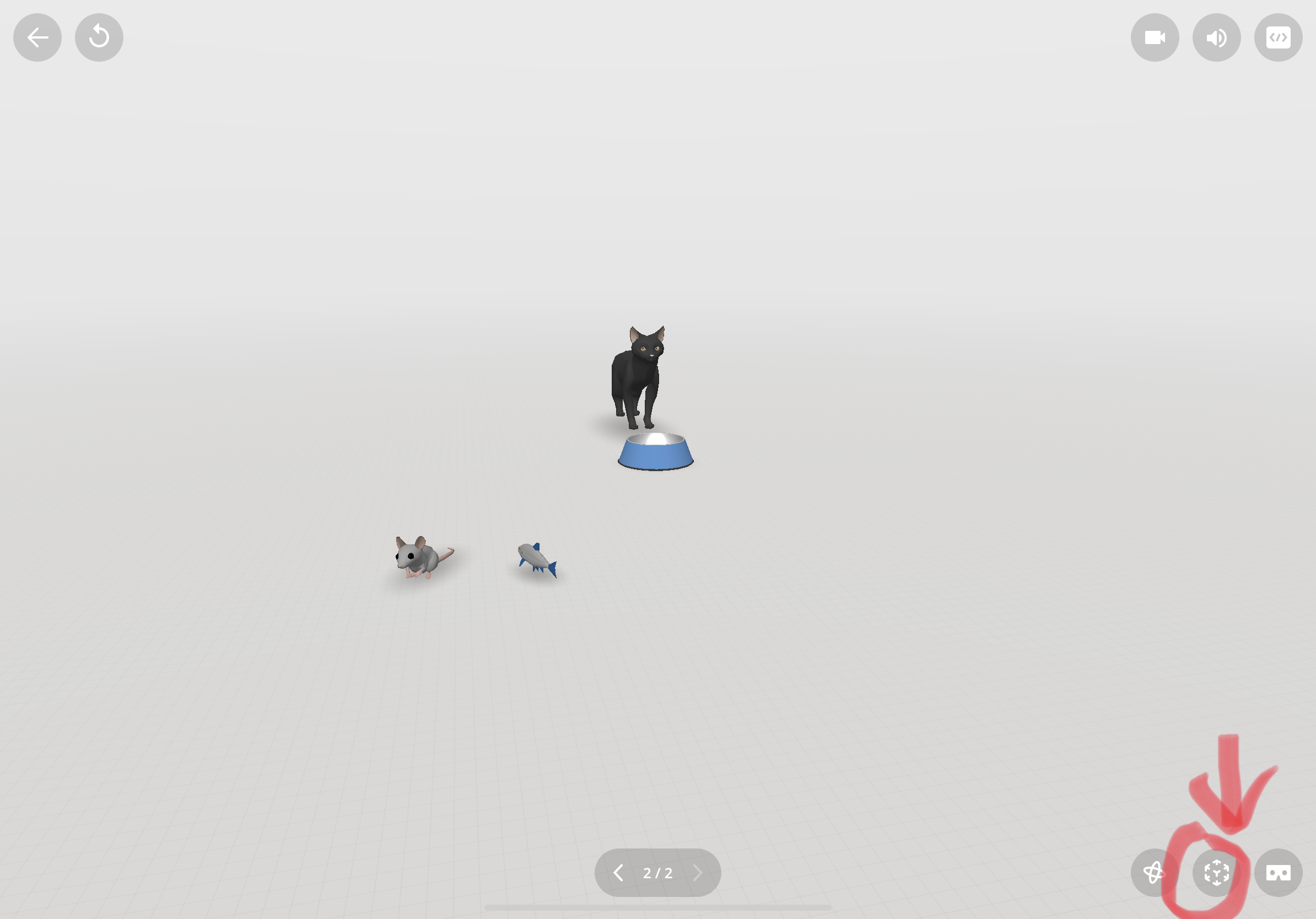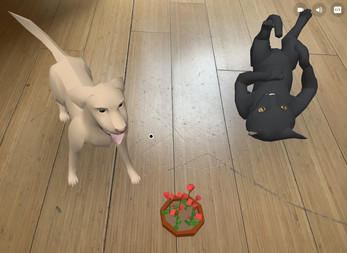AR Pet Companion
1. Needs Analysis
A great number of senior citizens are suffering from loneliness which may cause health issues for them. However, most current solutions to alleviate elders’ loneliness are either of high cost or low adaptability due to the involvement of the government and the support from society. A more adaptable approach for these elders is to raise pets and have human-animal interaction. Studies show that “Older pet owners have been found to be less likely to report loneliness” (Stanley et al., 2013) and “Pets may act as catalysts for human social interactions” (McNicholas and Collis, 2000). Nevertheless, a proportion of senior citizens can not raise real animals due to “psychological issues or living conditions” (Chaolan et al, 2017). Therefore, an AR pet game is designed to address the need for senior citizens who have difficulties in raising real pets. This game’s primary goal is to serve as a substitution of real pets, stimulating human-animal and human social interactions. It is designed to help senior citizens alleviate their loneliness by building attachment with virtual pets and socializing with other people surrounding pets, thus improving their health and decreasing the risks of their potential health issues.
2. Target Audience and Context
The target audience of this game is the elderly who feel lonely and have few social connections, especially those who are not wealthy and have difficulties in raising real pets. While simulating pet-owner relationships and interaction, this design ensures that it is affordable, easy, and safe to use for a wide range of elders, including those that live alone, lack mobility, or in poor functional and living status. Users will play this game in their homes.
3. Game Description
The learning goal of this game is to help users understand how to raise a pet and have various human-animal interactions with their augmented reality (AR) pets. By feeding and caring for the virtual pets and having responsive feedback, users build attachment with their pets, thus lowering their levels of loneliness (Krause-Parello and Gulick, 2013). Meanwhile, users increase human social interactions by seeing each other’s pets and having conversations “often as the animal a topic” (Fine, 2015).
Users start this game by choosing to raise a cat or a dog and customizing their pets’ appearances, personalities, and ages. In the meantime, users answer questions of whether they have raised pets before. For new pet owners, the system provides more instructions and reminders in the game on how to raise pets and maintain good relationships with them. Users can choose their preferences on non-verbal or verbal notifications.
During a typical day, users feed their pets with food and water and may play various toys with their pets and train their pets with verbal commands or gestures.
Besides, users hear sounds that suggest their pets’ are eating, sleeping, playing with themselves, wanting to play with them, or feeling hungry or thirsty. For users without experiences of raising pets, the system will send notifications and instructions when their pets need them.
As users interact with their pets more often, their intimacy with pets increases, and pets will be more responsive and tend to play with their owners more frequently. Moreover, training pets multiple times to react to their owners' gestures or voices enables pets to learn new behaviors.
Apart from interacting with their pets, users can invite other users’ pets to their homes and interact with them. Users can send gifts and voice messages with their pets to each other.
Since this game uses synchronic time with the real world, users will experience how their pets grow as time progresses. Animals can mate with another animal that belongs to the same user or different users and give birth to new babies.
4. Reflection
This game is well designed in randomness. Pet responds in a random time range and moves towards a random direction. Thus, players’ experiences vary when they trigger the same event. However, the current development platform does not allow more complicated models that support pet behavior based on their personalities that are calculated by artificial intelligence.
The biggest challenge in the design process is to find authentic 3D models. The initial idea of this game is to simulate real animals. Chaolan (2017)’s research found that the emotional connection players form “is often related to prior life experience with real animals.” Therefore, animal models that look like real creatures are crucial for users to build attachment with them. However, most AR development platforms’ built-in models are cartoon-like. Cat and dog models that look more genuine and vivid on the market are as expensive as hundreds of dollars. Furthermore, these high-cost models do not have inherent animations so they merely have simple movements when imported into the AR development platform.
It is difficult to implicitly incorporate instructions as a part of the immersive environment in the educational games. For players who are new pet owners, this game shows notification and instructions offered by the system, considering that pets telling their owners themselves makes pets like human-agents instead of real animals. However, whenever users receive a notification, they may feel the game is less realistic since they will not be told what their pets' needs are in real life.
For future AR pet game design, it would be ideal to put pet’s artificial intelligent personalities and users’ voice recognition into practice. Additionally, it is of significance to have more touch-sensitive recognition, for instance, users can interact with their pets by dragging, swiping, double-tap, or triple-tap the screen besides clicking, and touching and holding them in the real space.
Reference
Fine, A. H. (2015). Handbook on Animal-Assisted Therapy Theoretical Foundations and Guidelines for Practice. San Diego: Elsevier Science & Technology.
Krause-Parello, C. A., and Gulick, E. E. (2013). Situational factors related to loneliness and loss over time among older pet owners. West. J. Nurs. Res. 35, 905–919. doi: 10.1177/0193945913480567
Lin, Chaolan & Faas, Travis & Brady, Erin. (2017). Exploring Affection-Oriented Virtual Pet Game Design Strategies in VR Attachment, Motivations and Expectations of Users of Pet Games. 10.1109/ACII.2017.8273625.
Lin, Chaolan & Faas, Travis & Dombrowski, Lynn & Brady, Erin. (2017). Beyond cute: exploring user types and design opportunities of virtual reality pet games. 1-10. 10.1145/3139131.3139132.
McNicholas, J., and Collis, G. M. (2000). Dogs as catalysts for social interactions: robustness of the effect. Br. J. Psychol. 91, 61–70. doi: 10.1348/000712600161673
Stanley, I. H., Conwell, Y., Bowen, C., and Van Orden, K. A. (2013). Pet ownership may attenuate loneliness among older adult primary care patients who live alone. Aging Ment. Health 18:3, 394–399. doi: 10.1080/13607863.2013.837147
| Status | Prototype |
| Platforms | HTML5, Windows, macOS, Linux, Android |
| Author | yinjian huang |
| Genre | Educational |
| Tags | 3D, artificial-intelligence, Virtual Pet, Virtual Reality (VR) |
Download
Install instructions
How to play the demo:
1. Download "CoSpaces Edu" app in your mobile phone or tablet (ipad).
2. Open CoSpaces Edu and Scan this QR code

3. Click "Play" and enter the AR mode (click the icon in the middle of the right bottom corner)

4. To trigger the interaction, make sure that the round cursor is on the target item.

Leave a comment
Log in with itch.io to leave a comment.